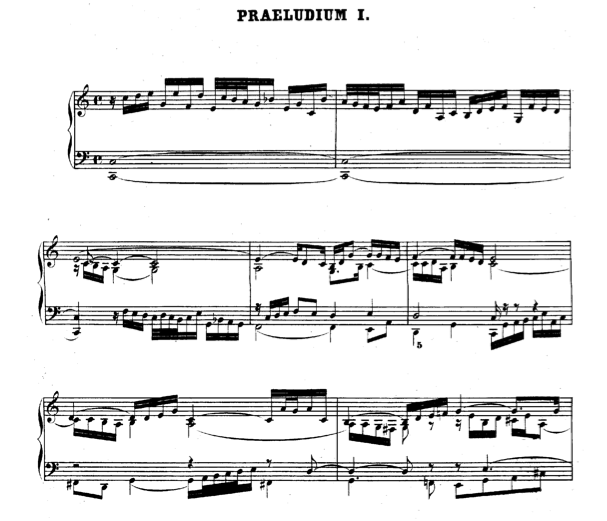Polyphony is a major part of Baroque Music. In fact, one of the most significant types of compositions in the Baroque Era, which is the Fugue, is Polyphonic by definition. A Fugue is a composition characterized by one main theme, called the subject, and the imitation of that theme by different voices. Fugue's usually have four voices, but could sometimes have three or five. The subject begins with the first unaccompanied voice. This way the subject is highlighted and it is easy to notice when the imitation of that subject begins to play in the next voice. The imitation of the subject starts at equally spaced intervals of time in each of the other voices. First the subject, then the second voice, then the third, and then the fourth. All with the same amount of time in between. Every time one of the voices finishes taking its turn at playing the subject they immediately play an accompaniment to the next voice playing the subject. This accompaniment is called the countersubject, and it is only played by one voice while another voice is playing the subject.

(Above is the image of the first five measures of Bach's Fugue # 9 in E Major from his Well Tempered Clavier Book 2.)
Click Here to listen to this Fugue
In this example of a Fugue from Bach's work we see the subject in the first measure and a half. After the first half of the second measure, the second voice begins to play the subject a perfect fifth above the first voice and the first voice goes into the countersubject. Then, another measure and a half later the third voice plays the subject a fourth above the second voice, and the second voice plays the countersubject and the first voice goes off independently.
After each voice in the Fugue has presented the subject, they are all independent from each other and play different melodies. The composer (Bach in this case) decides how many times the subject will be presented again and in what form. For instance the subject may be played with intervals reversed, which is called inversion. It could also be played backwards, with the last note to the first note of the subject. This technique is called retrograde.
Another form of polyphony in Baroque music is shown in the example below.

(This is an excerpt from Bach's Prelude # 1 in C from his Well Tempered Clavier Book 2.)
Click Here to listen to this piece